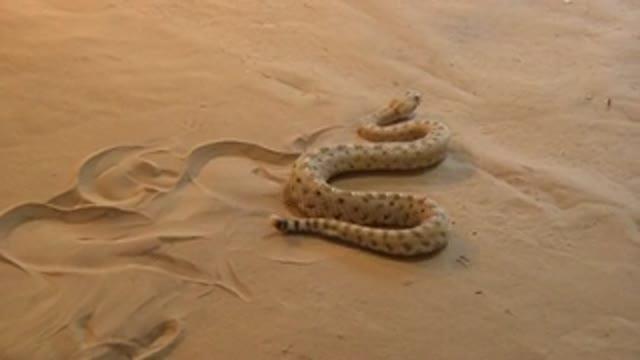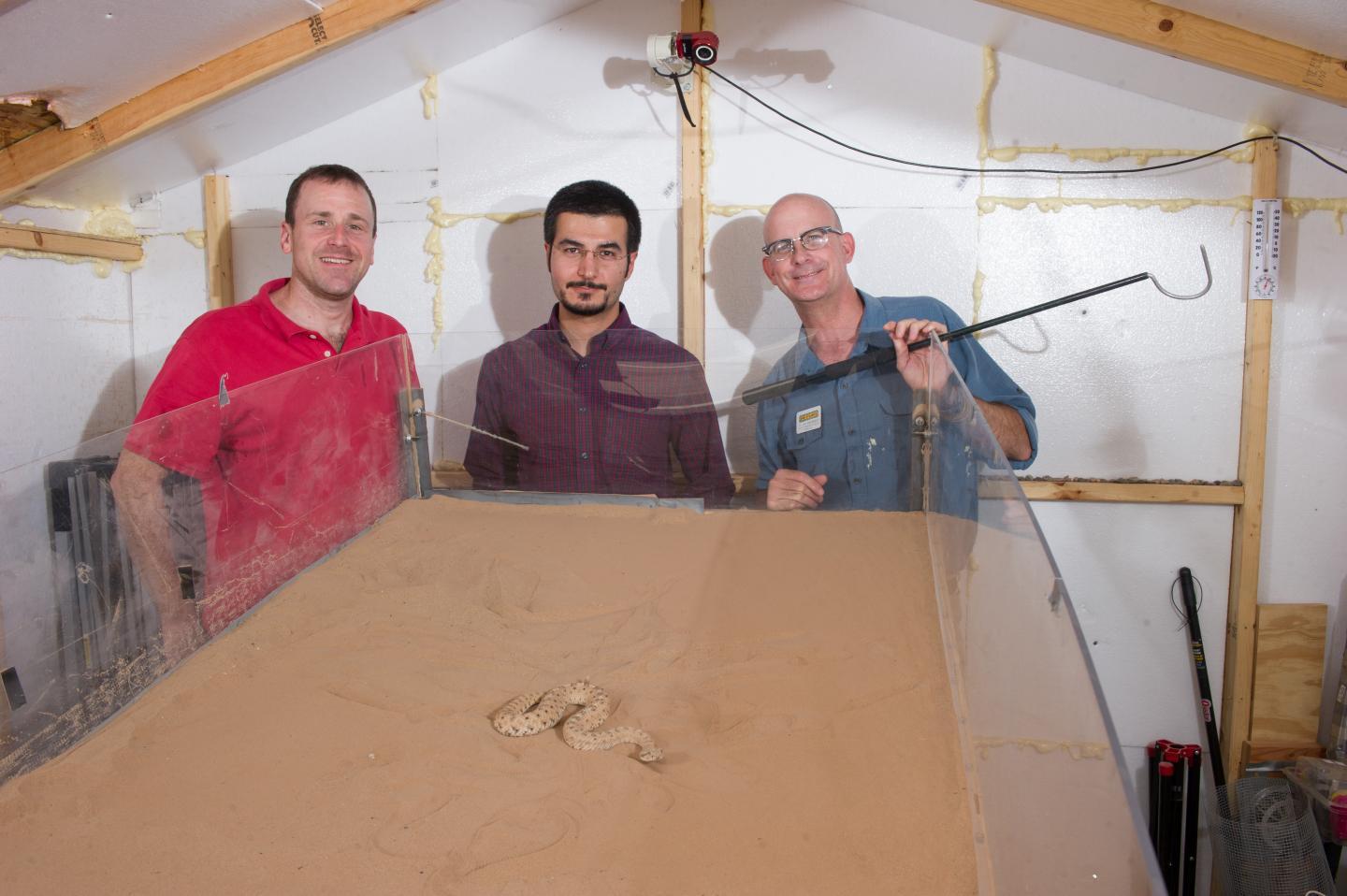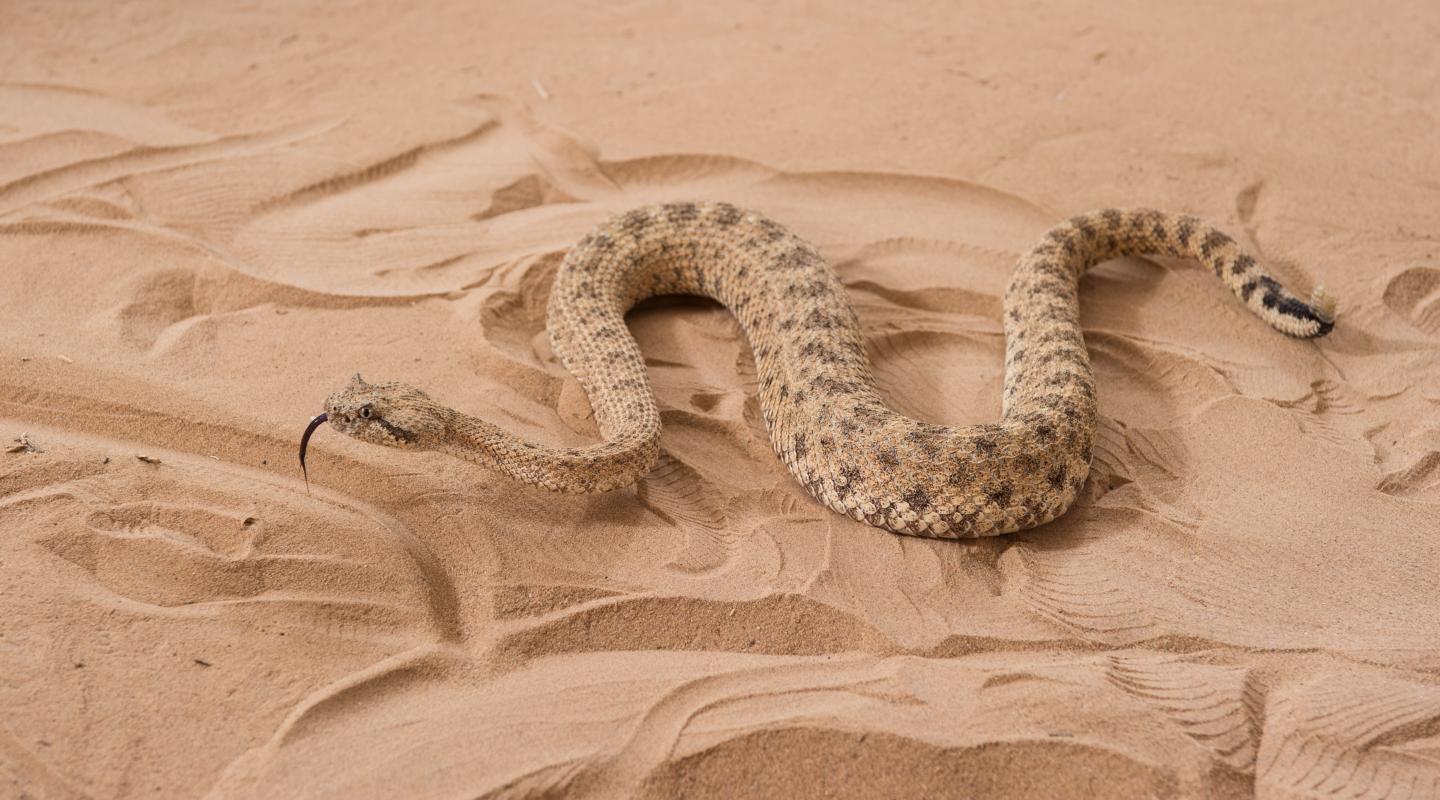"We realized that the sidewinder snakes use a template for climbing on sand, two orthogonal waves that they can control independently," said Hamid Marvi, a postdoctoral fellow at Carnegie Mellon who conducted the experiments while he was a graduate student in the laboratory of David Hu, an associate professor in Georgia Tech's School of Mechanical Engineering. "We used the snake robot to systematically study the failure modes in sidewinding. We learned there are three different failure regimes, which we can avoid by carefully adjusting the aspect ratio of the two waves, thus controlling the area of the body in contact with the sand."
Limbless animals like snakes can readily move through a broad range of surfaces, making them attractive to robot designers.
"The snake is one of the most versatile of all land animals, and we want to capture what they can do," said Ross Hatton, an assistant professor of mechanical engineering at Oregon State University who has studied the mathematical complexities of snake motion, and how they might be applied to robots. "The desert sidewinder is really extraordinary, with perhaps the fastest and most efficient natural motion we've ever observed for a snake."
Many people dislike snakes, but in this study, the venomous animals were easy study subjects who provided knowledge that may one day benefit humans, noted Joe Mendelson, director of research at Zoo Atlanta.
"If a robot gets stuck in the sand, that's a problem, especially if that sand happens to be on another planet," he said. "Sidewinders never get stuck in the sand, so they are helping us create robots that can avoid getting stuck in the sand. These venomous snakes are offering something to humanity."
The modular snake robot used in this study was specifically designed to pass horizontal and vertical waves through its body to move in three-dimensional spaces. The robot is two inches in diameter and 37 inches long; its body consists of 16 joints, each joint arranged perpendicular to the previous one. That allows it to assume a number of configurations and to move using a variety of gaits – some similar to those of a biological snake.
"This type of robot often is described as biologically inspired, but too often the inspiration doesn't extend beyond a casual observation of the biological system," Choset said. "In this study, we got biology and robotics, mediated by physics, to work together in a way not previously seen."
Choset's robots appear well suited for urban search-and-rescue operations in which robots need to make their way through the rubble of collapsed structures, as well as archaeological explorations. Able to readily move through pipes, the robots also have been tested to evaluate their potential for inspecting nuclear power plants from the inside out.
For Goldman's team, the work builds on earlier research studying how turtle hatchlings, crabs, sandfish lizards, and other animals move about on complex surfaces such as sand, leaves, and loose material. The team tests what it learns from the animals on robots, often gaining additional insights into how the animals move.

This video explains research done to understand the motion used by sidewinder snakes to climb sandy slopes and to apply that motion to a snake-like robot. Researchers from Georgia Tech, Carnegie-Mellon and Zoo Atlanta are interviewed.
(Photo Credit: : Maxwell Guberman)
"We are interested in how animals move on different types of granular and complex surfaces," Goldman said. "The idea of moving on flowing materials like sand can be useful in a broad sense. This is one of the nicest examples of collaboration between biology and robotics."

Researchers studied sidewinder snakes to understand the unique motion they use to climb sandy slopes. Shown (l-r) are Dan Goldman of Georgia Tech, Hamid Marvi of Carnegie Mellon and Joe Mendelson of Zoo Atlanta.
(Photo Credit: : Rob Felt)

A sidewinder snake is shown in a sand-filled trackway at Zoo Atlanta. Researchers from Georgia Tech, Carnegie-Mellon University, Zoo Atlanta and Oregon State Univesity studied the snakes to understand the unique motion they use to climb sandy slopes.
(Photo Credit: : Rob Felt)
Source: Georgia Institute of Technology